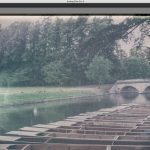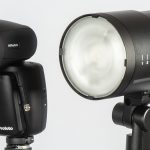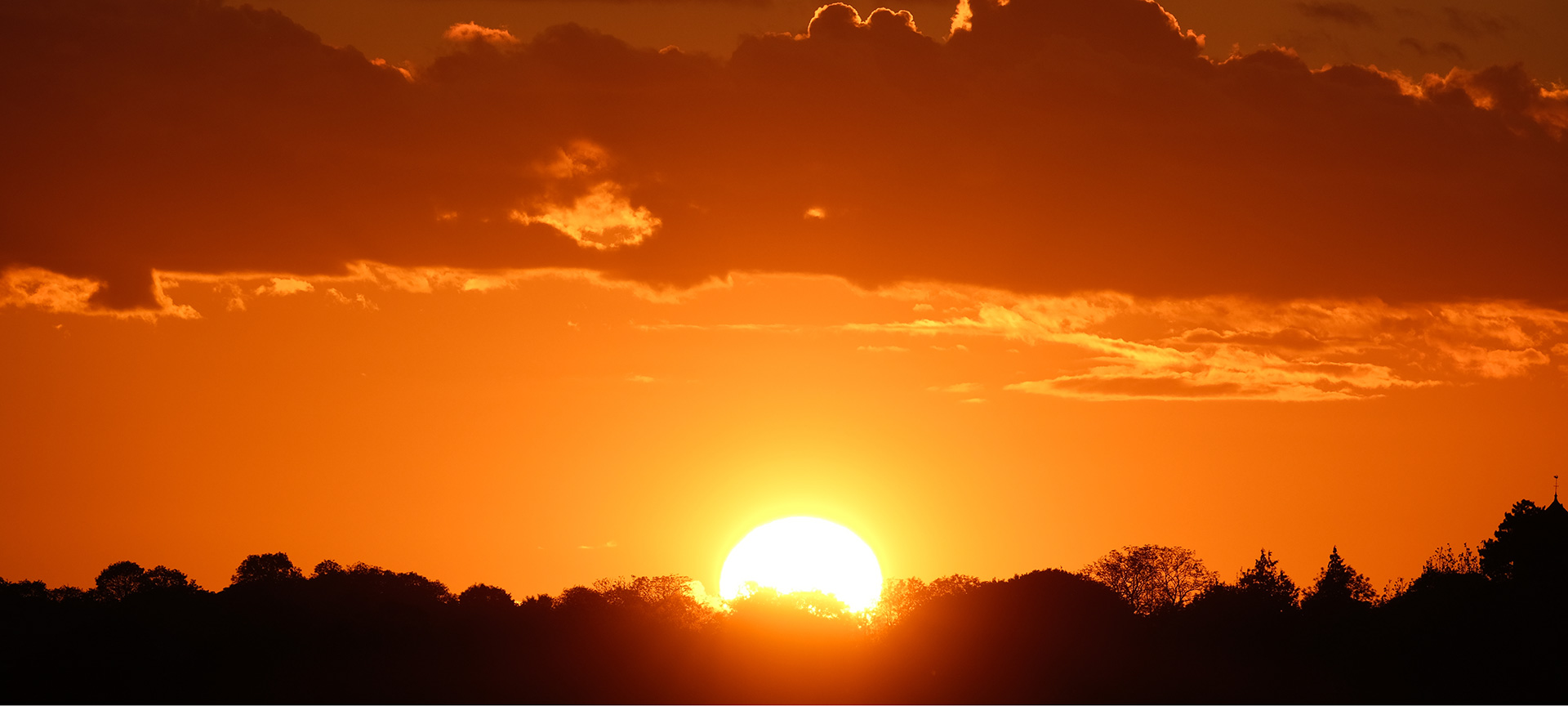
Fujifilm X-T3 test: X Series breaks boundaries
Posted on Oct 22, 2018
The X Series explodes into its fourth generation with the X-T3, a top-end camera sporting a new sensor, imaging processor and a world first or two
While there has been a huge amount of noise about full-frame mirrorless cameras recently, very significant developments are taking place elsewhere – not least the introduction of the Fujifilm X-T3. It’s a fourth-generation X Series camera and features a completely new sensor and imaging processor.
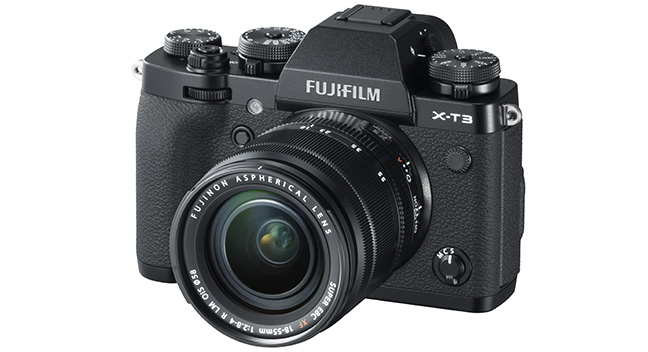
Fujifilm uses an X-Trans CMOS sensor in the vast majority of its X Series camera. It’s worth taking a moment to explain the difference between this design compared with the Bayer sensor used by most other brands.
A Bayer sensor uses a 2×2 grid of light-collecting photosites with one blue, one red and two green pixels. This grid of four pixels is repeated across the sensor and it is this uniformity that can lead to moiré patterning and false colours. This happens on areas of fine detail – cloth textures, fur, net curtains and so on. To cancel this effect, an optical low-pass filter (OLPF) is often used in front of the sensor. The downside to this is that it impacts on ultimate resolution.
Fujifilm’s X-Trans technology uses a 6×6 grid of red, blue and green pixels. The bigger grid, again repeated across the sensor, gives an effective random pixel layout so there is no moiré risk. Therefore, there is no need for an OLPF and there is much better image quality.
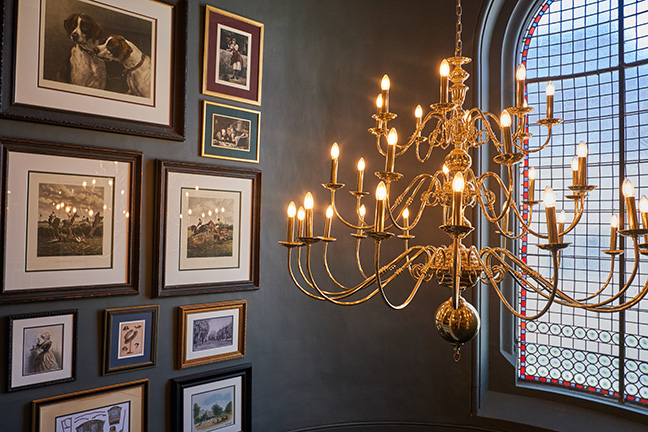
So, the X-T3 has an X-Trans CMOS sensor, but there is a first here, too. It is the first X Series camera with a back(side)-illuminated (BSI or BI) sensor. This is a review not a science lesson, but the subject is relevant, so BSI sensors deserve a very short explanation.
Most camera sensors are front illuminated, so what happens is that light has to travel through the sensor’s circuitry to reach the light-gathering photo diodes sitting on the substrate base. However, the amount of light is reduced by reflections on its journey to the sensor.
A BSI sensor is, in effect, a front-illuminated sensor upside down, with the substrate base made so very thin that light can travel through it and straight onto the light-gathering sensors without having to fight its way through the wires. The result is that more light is detected and that is a very good thing, giving, for example, better imaging performance at the higher ISO speeds.
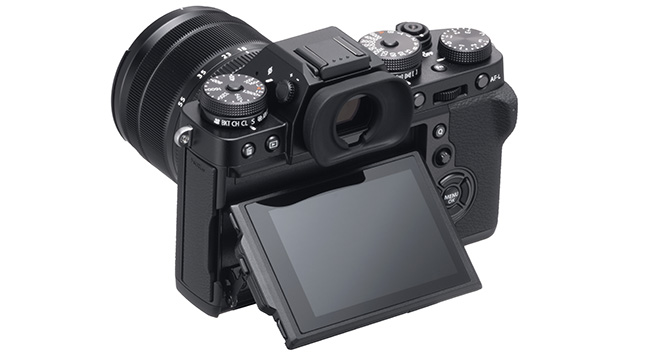
So, science lesson over – the X-T3 has a BSI sensor and you can see for yourself how well it performs in the accompanying panels.
Before we leave the sensor, the X-T3 has gained more phase detection pixels – now 2.16 million – covering almost the entire image frame. This is to give it better, more sensitive, superior all-round AF performance. The AF system is rated to work at -3EV, so we are talking about scenes lit by candlelight.
A great sensor counts for nothing if the information it gathers is not handled efficiently, so the X-T3 has seen a change here, too. It uses the new X Processor 4 that features four CPUs to deliver a processing speed three times faster than that of current models. This gives quicker AF (1.5x quicker than current models) with better accuracy – especially with face/eye detect, with eye detect now possible with continuous AF.
Continuous AF tracking of moving subjects during continuous shooting has also significantly improved with new phase detection algorithms.
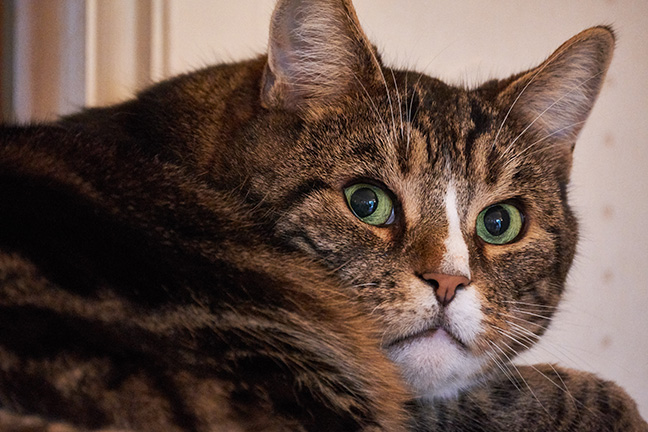
Fujifilm’s popular Film Simulation modes also benefit from the new processor, and the X-T3 has the ETERNA option. There’s more you can do with the monochrome modes, and you can add a sepia or purple tint.
Finally, on the new processor’s benefits: there’s a world first with its movie recording skills. The X-T3 is the first mirrorless APS-C format camera to give 4K/60P 4:2:0 10-bit output recorded to the internal SD card. HDMI output is available at the same time. While this might mean little to stills shooters, to video-makers this has serious appeal and is a significant step forward from previous X Series models.
It’s all the sensor/processor changes that make the X-T3 the X-T3 and not the X-T2 Mk II, but there are significant handling and external changes, too.
The X-T3’s body shell is identical to the X-T2’s, so it’s no surprise they share the same look and control layout. Cover the camera’s name and I think most people wouldn’t spot any differences.
One small but significant change is a lockable dioptre control. I am always nudging it on the X-T2 (hence mine is gaffer-taped into position) so the lockable version on the X-T3 is very welcome.
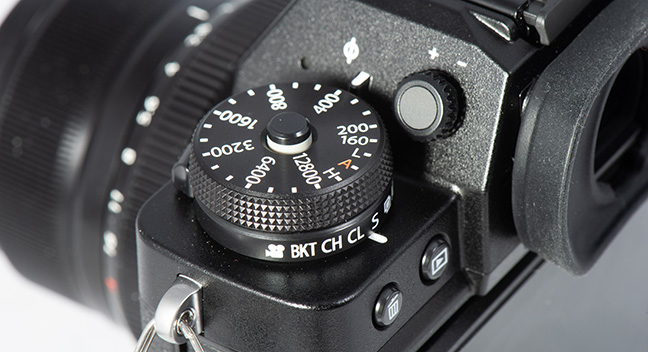
A close scrutiny reveals the X-T3’s ISO dial now has ISO 160 squeezed in between the 200 and L settings, and the exposure compensation dial on the right is smaller by about 2mm, which might help avoid its unintentional use. The compensation dial could even go smaller, but I found the X-T3’s less liable to be moved as the camera is pulled from the bag, so, nice one, Fujifilm design people!
Also, should you flip out the three-way tilt monitor – which also offers touchscreen operation – and look at its back, you’ll see the X-T3 is made in China not Japan, where cheaper labour costs may possibly have a benefit to the customer in terms of price. (The X-T2 was made in Japan.) However, as you’d expect, in terms of production values and quality of finish, there are no differences between the two cameras.
The EVF has a 3.69-million dot LCD with a 0.005 sec time lag and 100fps refresh rate that helps accurate composition of moving subjects, while a new sports finder mode also helps. This means you get an outline of the actual image area within the overall frame, so you can see subjects as they enter your picture. However, using the sports finder does mean the image is cropped by 1.25x, so the full image size of 6240×4160 pixels becomes 4992×3328 pixels.
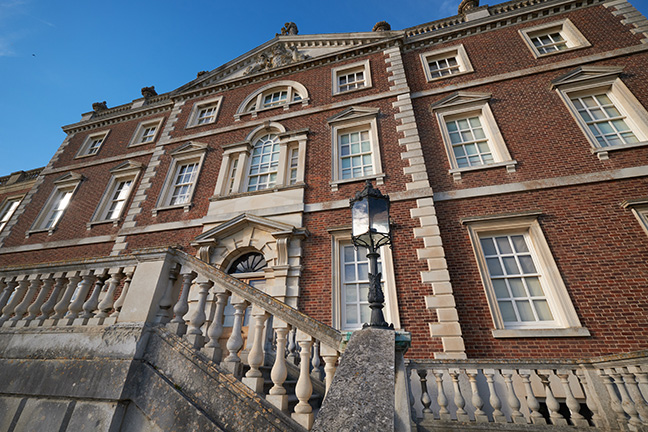
For action, the X-T3 can shoot at 30fps (with a 1.25x image crop) with AF and AE tracking, while the effect of rolling shutter has been halved compared with existing models.
With the mechanical shutter the X-T3 gives a top shooting rate of 11fps up to 36 shots, and you get 20fps up to 34 shots with the electronic shutter. This is with the basic camera body and shooting full-size, uncompressed Raws. My tests showed these to be accurate figures.
There is a pre-shot feature (with a 1.25x image crop and electronic shutter) where the camera starts shooting, but without recording, up to 20 shots with partial depression of the shutter release, and up to 20 more when the shutter release is fully depressed. It’s a handy feature if your reflexes are a tad slow or when something unexpected happens just before you push the shutter button all the way.
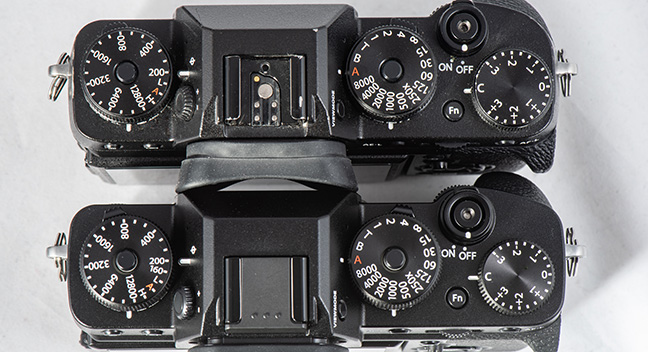
The souped-up AF system is a worthwhile benefit. I utilised it mostly in single zone, using the focus lever to navigate the working point around the screen, and having working zones across almost the entire screen is great. The system was very responsive in a wide variety of lighting conditions and performed impressively well in dim conditions. In dimly lit interiors or outside at night, the system locked on accurately and decisively.
For moving subjects, I tried the wide/tracking option, doing some test shots with the XF 100-400mm f/4-5.6 lens. The system did well and proved very effective with subjects that had defined edges and good contrast.
I had no issues with the exposure system, either. From my 2000-odd test shots (you rattle through frames at 30fps), I didn’t get any total failures, instead getting nice, richly coloured images.
Picture quality is of the very high standard I’d expect from a Fujifilm X Series cameras and this being the first of the fourth generation augurs well for future models. I used the new Capture One Express Fujifilm for Raw processing and the results certainly printed up very nicely indeed. The slightly bigger image size compared with the X-T2 (6240×4160 pixels plays 6000×4000 pixels) made little practical difference; however, I am always happy with more pixels to work with.
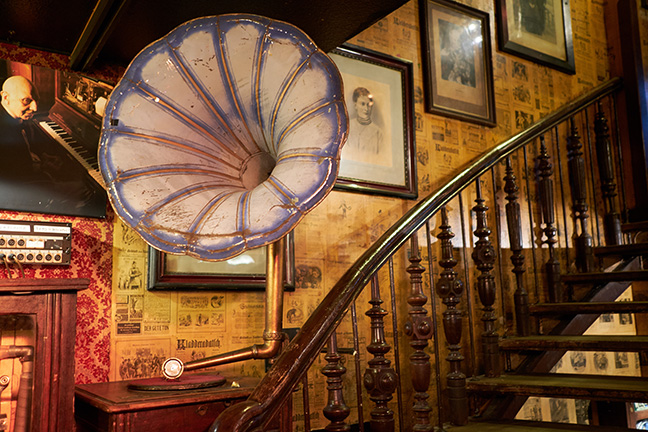
Verdict
Is the Fujifilm X-T3 worth buying? If you are reading this, that’s the question you want answering. But, as always, there are many things to be considered. If you’re not yet a Fujifilm owner, I think the X-T3 is a serious contender for your money. It works very well on so many levels, it’s strongly supported by an extensive X lens system and its price is seriously competitive. For comparison, the X-T2 body was £1399 when it came out in 2016.
So, what about from an X-T2 owner’s perspective – is the X-T3 worth upgrading to? If you’re after pure pixel count there is a gain, but 26- against 24-megapixels isn’t a big leap. Yet there are clear benefits in image quality, AF and high ISO performance, so if you like to make big prints and want snappier, more reliable focusing and shoot in all lighting types, I think the answer’s clear: get out your credit card.
A Second Opinion: Daisy Dickinson
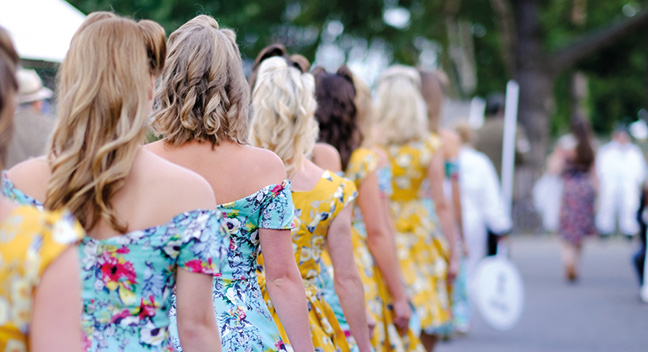
Beautiful weather, classic car racing, vintage get-up, and plenty of people watching – what could possibly offer a better playground in which to test the new Fujifilm X-T3? As a long-term punter at the Goodwood Revival – and already a fan of Fujifilm’s predecessor, the X-T2 – I was keen to put pedal to the metal and see what the X-T3 had to offer.
Taking to the tracks at Goodwood, speed was on my mind. The X-T3 didn’t disappoint, boasting 11fps and the option of 30fps with the electronic shutter in continuous shooting. AF has also been improved, four times faster according to the specs, and with better rapid tracking capabilities. I certainly found the camera locked on to the subject more effectively using continuous AF with wide/tracking, and live view of 60fps meant checking the subject while shooting was a breeze. A little manipulation of the custom focusing menu meant I could further adjust for optimum results – particularly useful when not one but five AC Cobras are racing past, all muscling for pole position.
Spend all day shooting and the improved battery life is noticeable – this new X-series camera promises to give you around 390 frames on one charge, and I had no power issues during my day of action. Of course, you can opt for the new horizontal grip, too, for further power and stability.
Videographers will be pleased about the addition of a 3.5mm headphone jack, as well as supporting 4K/60P internal recording and output, but it was the speed and precision that really had my back at Goodwood. Shooting in between crowds of punters, cars speeding past in all directions, and it’s easy to miss the moment. Using a combination of AF tracking, the improved face/eye detection and the X-T3’s focus lever meant I was able to dip between people and get atmospheric, candid shots of drivers in between races. I really enjoyed using the XF56mm f/1.2 APD for stunning portraits with a beautifully soft depth-of-field and rich, vibrant colour reproduction, while the sophisticated AF made it easy to keep locked on to my subjects, with face and eye detection proving useful.
The 3in, 1040k-dot, tri-adjustable LCD is easy to pull out and twist, and lets you get down low for dynamic shots – it has touchscreen capability, too.
With its hybrid AF system and a brand new sensor, the X-T3 offers flexible, fast shooting for a wide range of subjects. Lightweight, packed with functionality and creative potential, it’s definitely a camera I’d happily take for a spin.
Click the images to see a larger view
Performance: Exposure Latitude
A nine-frame exposure bracket was shot using the X-T3 from +4EV to -4EV to the correct exposure reading, which was metered at 1/300sec at f/11 and ISO 200.
The resulting Raws were corrected in Capture One Express Fujifilm and then outputted as full-sized JPEGs.
Overexposure wasn’t handled too well, with the +4EV shot beyond acceptable recovery. The +3EV shot coped better and this sample image looked fine. Scenes with stronger highlights looked less impressive. Raws overexposed by +2EV and +1EV recovered perfectly well, and virtually matched the correctly exposed image.
The underexposed Raws by -4EV and -3EV looked fine in terms of tonality after recovery in software, but there was a noticeable noise increase in the mid-tones and shadows. In the -2EV shot the recovered image had a little noise compared with the correctly exposed shot, while the -1EV shot looked identical.
Click the images to see a larger view
Performance: ISO
The X-T3’s new sensor comes with an extended ISO range, with the option of ISO 160 at the bottom end of the normal ISO range and ISO 80 with expansion. The top end stays at ISO 12,800 with the option of expansion to ISO 25,600 and 51,200, both available in JPEG and Raw files. With the two high speeds, you can decide what speed the H setting represents via the camera’s menu.
Our test shots were Raw originals, shot with the X-T3 fitted with an XF 23mm f/2 lens with the combination on a Novo Explora T20 carbon fibre tripod. In-camera noise reduction was set to zero. The low-light scene required an exposure of 1sec at f/5.6 at ISO 200.
The Raws were processed in Capture One Express Fujifilm (downloadable from phaseone.com) default NR and sharpening. This is a new free software that supports Fujifilm cameras and includes essential editing tools such as Raw processing and a catalogue function. If you want tethered shooting, layers and cloning/healing features then you’ll need Capture One Pro Fujifilm, which is €159 a year or €16 a month.
As you’d expect, image quality at ISO 160 was very impressive, with clean, crisp, fine detail coupled with lifelike, saturated colour reproduction. There was little change as you progressed up the speed scale and even close scrutiny of the ISO 160 and 1600 showed few, if any differences. There was perhaps a very slight deterioration in the recording of very fine detail.
The picture at ISO 3200 was little different, with an incremental drop-off in the reproduction of fine detail but not much else, and no sign of any noise, so we are talking an impressive ISO performance from the X-T3 here. If the lighting situation demanded it, I’d be happy using ISO 3200 for critical results knowing detail would still look very good with minimal noise, considering the high ISO.
To get to ISO 6400 before seeing significant noise is a notable achievement, and even at this high speed fine detail remains nicely recorded and smooth, with pretty low noise levels. At the last true ISO setting of 12,800, noise is much more in evidence and it does impact on fine detail, and that is even more the case at the two expanded speeds.
As a comparison, the same scene was also shot with an X-T2, its resulting Raws also processed through Capture One. Speed for speed the differences were minor in terms of resolution. The X-T3’s noise levels were lower but I think both cameras can be used at high ISOs with confidence.
Looking at JPEGs straight out of camera, I thought the X-T3 had a slightly clearer edge in terms of overall quality, but to be honest you need to get deep into pixel-peeping territory to see any differences.
All told, the X-T3 and its new BSI sensor delivers a really impressive noise performance.
Click the images to see a larger view
As featured in issue 60 of Photography News.























